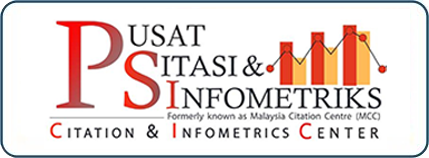The Role of Inflammatory Markers for Risk Stratification and Prognosis in Dialysis Patients: A Narrative Review
DOI:
https://doi.org/10.33102/mjosht.493Keywords:
dialysis, inflammatory markers, risk stratification, prognosis, cardiovascular complicationAbstract
Chronic inflammation is a prevalent condition among dialysis patients and is associated with adverse health outcomes. This narrative review aims to provide a comprehensive analysis of the types and roles of inflammatory markers in risk assessment and their impact on the prognosis of dialysis patients. The associations between various inflammatory markers, including C-Reactive Protein (CRP), anti-inflammatory markers (IL-4, IL-10), and pro-inflammatory markers (TNF-α, IL-1, IL-6, IL-12), are evaluated in relation to their ability to predict mortality and cardiovascular complications in this population. Additionally, the potential of these markers for individualized risk stratification is discussed, aiding proper clinical decision-making and improving patient care. This review synthesizes current knowledge on inflammatory markers and their impact on the outcomes of dialysis patients, offering insights for improved prognostic assessment and therapeutic strategies.
Downloads
References
Yuan Q, Tang B, Zhang C. Signaling pathways of chronic kidney diseases, implications for therapeutics. Signal Transduct Target Ther. 2022;7(1):182. doi:10.1038/s41392-022-01006-3.
Gusev E, Solomatina L, Zhuravleva Y, Sarapultsev A. The Pathogenesis of End-Stage Renal Disease from the Standpoint of the Theory of General Pathological Processes of Inflammation. Int J Mol Sci. 2021;22(21):11453. 2021 Oct 23. doi:10.3390/ijms222111453
Niu D, Yang JJ, He DF. The role of macrophages in renal fibrosis and therapeutic prospects. PeerJ. 2025;13:e19769. doi:10.7717/peerj.19769.
Wang C, Li SW, Zhong X, Liu BC, Lv LL. An update on renal fibrosis: from mechanisms to therapeutic strategies with a focus on extracellular vesicles. Kidney Res Clin Pract. 2023;42(2):174-87. doi:10.23876/j.krcp.23.030.
Pretto CR, Winkelmann ER, Hildebrandt LM, Barbosa DA, Colet CDF, Stumm EMF. Quality of life of chronic kidney patients on hemodialysis and related factors. Rev Latino-Am Enfermagem 2020;28:e3327. https://doi.org/10.1590/1518-8345.3641.3327.
Poznyak AV, Bharadwaj D, Prasad G, Grechko AV, Sazonova MA, Orekhov AN. Renin-Angiotensin System in Pathogenesis of Atherosclerosis and Treatment of CVD. IJMS 2021;22:6702. https://doi.org/10.3390/ijms22136702.
Stenvinkel P, Heimbürger O, Paultre F, Diczfalusy U, Wang T, Berglund L, et al. Strong association between malnutrition, inflammation, and atherosclerosis in chronic renal failure. Kidney International 1999;55:1899–911. https://doi.org/10.1046/j.1523-1755.
Su H, Lei C-T, Zhang C. Interleukin-6 Signaling Pathway and Its Role in Kidney Disease: An Update. Front Immunol 2017;8:405. https://doi.org/10.3389/fimmu.2017.00405.
Mallat Z, Besnard S, Duriez M, Deleuze V, Emmanuel F, Bureau MF, et al. Protective Role of Interleukin-10 in Atherosclerosis. Circulation Research 1999;85. https://doi.org/10.1161/01.RES.85.8.e17.
Fan X, Zhang X, Liu LC, Kim AY, Curley SP, Chen X, et al. Interleukin-10 attenuates renal injury after myocardial infarction in diabetes. J Investig Med. 2022;70(5):1233-42. doi:10.1136/jim-2021-002008..
Yong, Kenneth et al. “Elevated interleukin-12 and interleukin-18 in chronic kidney disease are not associated with arterial stiffness.” Cytokine vol. 64,1 (2013): 39-42. doi:10.1016/j.cyto.2013.05.023.
Luxton R, Kiely J, Drake M. Interleukins in urine and blood as markers of infection and as risk factors for systemic conditions. Eur Urol Focus. 2024;10(6):706-709. doi:10.1016/j.euf.2024.09.016.
Cobo G, Lindholm B, Stenvinkel P. Chronic inflammation in end-stage renal disease and dialysis. Nephrology Dialysis Transplantation 2018;33: iii35–40. https://doi.org/10.1093/ndt/gfy175.
Ebert T, Neytchev O, Witasp A, Kublickiene K, Stenvinkel P, Shiels PG. Inflammation and Oxidative Stress in Chronic Kidney Disease and Dialysis Patients. Antioxidants & Redox Signaling 2021;35:1426–48. https://doi.org/10.1089/ars.2020.8184.
Nowak KL, Hung A, Ikizler TA, Farmer-Bailey H, Salas-Cruz N, Sarkar S, et al. Interleukin-1 inhibition, chronic kidney disease-mineral and bone disorder, and physical function. CN 2017;88:132–43. https://doi.org/10.5414/CN109122.
Akchurin OM, Kaskel F. Update on Inflammation in Chronic Kidney Disease. Blood Purif 2015;39:84–92. https://doi.org/10.1159/000368940.
Kaskel F. Chronic renal disease: A growing problem. Kidney International 2003;64:1141–51. https://doi.org/10.1046/j.1523-1755.2003.00194.x.
Stenvinkel P, Carrero JJ, Axelsson J, Lindholm B, Heimbürger O, Massy Z. Emerging biomarkers for evaluating cardiovascular risk in the chronic kidney disease patient: how do new pieces fit into the uremic puzzle?. Clin J Am Soc Nephrol. 2008;3(2):505-521. doi:10.2215/CJN.03670807
Graterol Torres F, Molina M, Soler-Majoral J, Romero-González G, Rodríguez Chitiva N, Troya-Saborido M, et al. Evolving Concepts on Inflammatory Biomarkers and Malnutrition in Chronic Kidney Disease. Nutrients 2022;14:4297. https://doi.org/10.3390/nu14204.
Gu Y-Y, Liu X-S, Huang X-R, Yu X-Q, Lan H-Y. Diverse Role of TGF-β in kidney disease. Front Cell Dev Biol 2020;8:123. https://doi.org/10.3389/fcell.2020.00123.
Gao L, Zhong X, Jin J, Li J, Meng XM. Potential targeted therapy and diagnosis based on novel insight into growth factors, receptors, and downstream effectors in acute kidney injury and acute kidney injury-chronic kidney disease progression. Signal Transduct Target Ther. 2020;5(1):9. 2020 Feb 14. doi:10.1038/s41392-020-0106-1
You Y-K, Huang X-R, Chen H-Y, Lyu X-F, Liu H-F, Lan HY. C-Reactive Protein Promotes Diabetic Kidney Disease in db/db Mice via the CD32b-Smad3-mTOR signaling Pathway. Sci Rep 2016;6:26740. https://doi.org/10.1038/srep26740.
Sproston NR, Ashworth JJ. Role of C-Reactive Protein at Sites of Inflammation and Infection. Front Immunol 2018;9:754. https://doi.org/10.3389/fimmu.2018.00754.
Li K, Boudville N, Lan HY. Role of C-Reactive Protein in Kidney Diseases. Kidney Dis (Basel). 2023;9(2):73-81. doi:10.1159/000528693.
Bazeley J, Bieber B, Li Y, Morgenstern H, De Sequera P, Combe C, et al. C-Reactive Protein and Prediction of 1-Year Mortality in Prevalent Hemodialysis Patients. Clinical Journal of the American Society of Nephrology 2011;6:2452–61. doi:10.2215/CJN.00710111
Verma S, Wang C-H, Li S-H, Dumont AS, Fedak PWM, Badiwala MV, et al. A Self-Fulfilling Prophecy: C-Reactive Protein Attenuates Nitric Oxide Production and Inhibits Angiogenesis. Circulation 2002;106:913–9. https://doi.org/10.1161/01.CIR.0000029802.88087.5.
Zimmermann J, Herrlinger S, Pruy A, Metzger T, Wanner C. Inflammation enhances cardiovascular risk and mortality in hemodialysis patients. Kidney International 1999;55:648–58. https://doi.org/10.1046/j.1523-1755.1999.00273.x.
Zoccali C, Mallamaci F, Tripepi G. Inflammation and Atherosclerosis in End-Stage Renal Disease. Blood Purif 2003;21:29–36. https://doi.org/10.1159/000067852.
Dember LM, Hung A, Mehrotra R, et al. A randomized controlled pilot trial of anakinra for hemodialysis inflammation. Kidney Int. 2022;102(5):1178-1187. doi:10.1016/j.kint.2022.06.022
Stenvinkel P. Inflammation in end-stage renal failure: could it be treated? Nephrology Dialysis Transplantation 2002;17:33–8. https://doi.org/10.1093/ndt/17.suppl_8.33.
Ducloux D, Bresson-Vautrin C, Kribs M, Abdelfatah A, Chalopin J-M. C-reactive protein and cardiovascular disease in peritoneal dialysis patients. Kidney International 2002;62:1417–22. https://doi.org/10.1111/j.1523-1755.2002.kid562.x.
Parameswaran N, Patial S. Tumor Necrosis Factor-α Signaling in Macrophages. Crit Rev Eukar Gene Expr 2010;20:87–103. https://doi.org/10.1615/CritRevEukarGeneExpr.v20.i2.10.
Black RA, Rauch CT, Kozlosky CJ, Peschon JJ, Slack JL, Wolfson MF, et al. A metalloproteinase disintegrin that releases tumour-necrosis factor-α from cells. Nature 1997;385:729–33. https://doi.org/10.1038/385729a0.
Gupta J, Mitra N, Kanetsky PA, Devaney J, Wing MR, Reilly M, et al. Association between albuminuria, kidney function, and inflammatory biomarker profile in CKD in CRIC. Clin J Am Soc Nephrol. 2012;7(12):1938‑46. doi:10.2215/CJN.03500412
Aggarwal BB, Gupta SC, Kim JH. Historical perspectives on tumor necrosis factor and its superfamily: 25 years later, a golden journey. Blood 2012;119:651–65. https://doi.org/10.1182/blood-2011-04-325225.
van der Heiden K, Cuhlmann S, Luong LA, Zakkar M, Evans PC. Role of nuclear factor κB in cardiovascular health and disease. Clinical Science 2010;118:593–605. https://doi.org/10.1042/CS20090557.
Hotamisligil GS, Arner P, Caro JF, Atkinson RL, Spiegelman BM. Increased adipose tissue expression of tumor necrosis factor-alpha in human obesity and insulin resistance. J Clin Invest 1995;95:2409–15. https://doi.org/10.1172/JCI117936.
Weiss G, Goodnough LT. Anemia of Chronic Disease. N Engl J Med 2005;352:1011–23. https://doi.org/10.1056/NEJMra041809.
Dinarello CA. Overview of the IL ‐1 family in innate inflammation and acquired immunity. Immunological Reviews 2018;281:8–27. https://doi.org/10.1111/imr.12621.
Mantovani A, Dinarello CA, Molgora M, Garlanda C. Interleukin-1 and Related Cytokines in the Regulation of Inflammation and Immunity. Immunity 2019;50:778–95. https://doi.org/10.1016/j.immuni.2019.03.012.
Cho JM, Koh JH, Kim SG, Lee S, Kim Y, Cho S, et al. Mendelian randomization uncovers a protective effect of interleukin-1 receptor antagonist on kidney function. Commun Biol 2023;6:722. https://doi.org/10.1038/s42003-023-05091-8.
Vanholder R, Smet RD, Glorieux G, Dhondt A. Survival of Hemodialysis Patients and Uremic Toxin Removal. Artificial Organs 2003;27:218–23. https://doi.org/10.1046/j.1525-1594.2003.07212.x.
Cottone S, Lorito MC, Riccobene R, Nardi E, Mulè G, Buscemi S, et al. Oxidative stress, inflammation and cardiovascular disease in chronic renal failure. J Nephrol 2008;21:175–9.
Martínez-Moreno JM, Herencia C, De Oca AM, Díaz-Tocados JM, Vergara N, Gómez-Luna M. José, et al. High phosphate induces a pro-inflammatory response by vascular smooth muscle cells and modulation by vitamin D derivatives. Clinical Science 2017;131:1449–63.
Tripathi G, Rangaswamy D, Borkar M, Prasad N, Sharma R, Sankhwar S, et al. Interleukin 1 gene cluster variants in hemodialysis patients with end stage renal disease: An association and meta analysis. Indian J Nephrol 2015;25:34. https://doi.org/10.4103/09.
Paul WE. History of interleukin-4. Cytokine 2015;75:3–7. https://doi.org/10.1016/j.cyto.2015.01.038.
Dejaco C, Duftner C, Grubeck‐Loebenstein B, Schirmer M. Imbalance of regulatory T cells in human autoimmune diseases. Immunology 2006;117:289–300. https://doi.org/10.1111/j.1365-2567.2005.02317.x.
Mosmann TR, Coffman RL. TH1 and TH2 Cells: Different Patterns of Lymphokine Secretion Lead to Different Functional Properties. Annu Rev Immunol 1989;7:145–73. https://doi.org/10.1146/annurev.iy.07.040189.001045.
Robertson A-KL, Hansson GK. T Cells in Atherogenesis: For Better or For Worse? ATVB 2006;26:2421–32. https://doi.org/10.1161/01.ATV.0000245830.29764.84.
Van Rijt WG, Van Goor H, Ploeg RJ, Leuvenink HGD. Erythropoietin‑mediated protection in kidney transplantation: nonerythropoietic EPO derivatives improve function without increasing risk of cardiovascular events. Transpl Int. 2014;27(3):241‑8. doi:10.1111/tri.12174
Schaper F, Rose-John S. Interleukin-6: Biology, signaling and strategies of blockade. Cytokine & Growth Factor Reviews 2015;26:475–87. https://doi.org/10.1016/j.cytogfr.2015.07.004.
Tanaka T, Narazaki M, Kishimoto T. IL-6 in Inflammation, Immunity, and Disease. Cold Spring Harbor Perspectives in Biology 2014;6:a016295–016295. https://doi.org/10.1101/cshperspect.a016295.
Roy N, Rosas SE. IL-6 Is Associated with Progression of Coronary Artery Calcification and Mortality in Incident Dialysis Patients. Am J Nephrol 2021;52:745–52. https://doi.org/10.1159/000518652.
Hunter CA, Jones SA. IL-6 as a keystone cytokine in health and disease. Nat Immunol 2015;16:448–57. https://doi.org/10.1038/ni.3153.
Ouyang W, Rutz S, Crellin NK, Valdez PA, Hymowitz SG. Regulation and Functions of the IL-10 Family of Cytokines in Inflammation and Disease. Annu Rev Immunol 2011;29:71–109. https://doi.org/10.1146/annurev-immunol-031210-101312.
Lisinski TJ, Furie MB. Interleukin‑10 inhibits pro-inflammatory activation of endothelium in response to Borrelia burgdorferi or lipopolysaccharide but not interleukin-1β or tumor necrosis factor‑α. J Leukoc Biol. 2002;72(3):503–11. doi:10.1189/jlb.72.3.503
De Waal Malefyt R, Abrams J, Bennett B, Figdor CG, De Vries JE. Interleukin 10(IL-10) inhibits cytokine synthesis by human monocytes: an autoregulatory role of IL-10 produced by monocytes. The Journal of Experimental Medicine 1991;174:1209–20. https://doi.
Couper KN, Blount DG, Riley EM. IL-10: The Master Regulator of Immunity to Infection. The Journal of Immunology 2008;180:5771–7. https://doi.org/10.4049/jimmunol.180.9.5771.
Trinchieri G. Interleukin-12 and the regulation of innate resistance and adaptive immunity. Nat Rev Immunol 2003;3:133–46. https://doi.org/10.1038/nri1001.
Bacchetta R, Gregori S, Roncarolo M-G. CD4+ regulatory T cells: Mechanisms of induction and effector function. Autoimmunity Reviews 2005;4:491–6. https://doi.org/10.1016/j.autrev.2005.04.005.
Means TK, Jones BW, Schromm AB, Shurtleff BA, Smith JA, Keane J, et al. Differential Effects of a Toll-Like Receptor Antagonist on Mycobacterium tuberculosis -Induced Macrophage Responses. The Journal of Immunology 2001;166:4074–82. https://doi.org/10.404.
Mocellin S. The dual role of IL-10. Trends in Immunology 2003;24:36–43. https://doi.org/10.1016/S1471-4906(02)00009-1.
Yuan Q, Wang J, Peng Z, et al. Neutrophil-to-lymphocyte ratio and incident end-stage renal disease in Chinese patients with chronic kidney disease: results from the Chinese Cohort Study of Chronic Kidney Disease (C-STRIDE). J Transl Med. 2019;17(1):86. Published 2019 Mar 15. doi:10.1186/s12967-019-1808-4.
Mureșan AV, Russu E, Arbănași EM, Kaller R, Hosu I, Arbănași EM, et al. The Predictive Value of NLR, MLR, and PLR in the Outcome of End-Stage Kidney Disease Patients. Biomedicines 2022;10:1272. https://doi.org/10.3390/biomedicines10061272.
Huang Z, Fu Z, Huang W, Huang K. Prognostic value of neutrophil-to-lymphocyte ratio in sepsis: A meta-analysis. The American Journal of Emergency Medicine 2020;38:641–7. https://doi.org/10.1016/j.ajem.2019.10.023.
Hotchkiss RS, Karl IE. The Pathophysiology and Treatment of Sepsis. N Engl J Med 2003;348:138–50. https://doi.org/10.1056/NEJMra021333.
Solak Y, Yilmaz MI, Sonmez A, Saglam M, Cakir E, Unal HU, et al. Neutrophil to lymphocyte ratio independently predicts cardiovascular events in patients with chronic kidney disease. Clin Exp Nephrol 2013;17:532–40. https://doi.org/10.1007/s10157-012-0728-.
Kato S, Abe T, Lindholm B, Maruyama S. Neutrophil/lymphocyte ratio: A promising prognostic marker in patients with chronic kidney disease. Inflamm Cell Signal. 2015;2(1):132-7.
Altunoren O, Akkus G, Sezal DT, Ciftcioglu M, Guzel FB, Isiktas S, et al. Does neutrophyl to lymphocyte ratio really predict chronic kidney disease progression? Int Urol Nephrol 2019;51:129–37. https://doi.org/10.1007/s11255-018-1994-7.
Cognasse F, Garraud O, Pozzetto B, Laradi S, Hamzeh‐Cognasse H. How can non‐nucleated platelets be so smart? Journal of Thrombosis and Haemostasis 2016;14:794–6. https://doi.org/10.1111/jth.13262.
[82] Sut C, Tariket S, Aubron C, Aloui C, Hamzeh-Cognasse H, Berthelot P, et al. The Non-Hemostatic Aspects of Transfused Platelets. Front Med 2018;5:42. https://doi.org/10.3389/fmed.2018.00042.
Li, J., Yang, M., Zhang, X. et al. Neutrophil to albumin ratio predicts cardiovascular and all cause mortality in CVD patients with abnormal glucose metabolism. Sci Rep 15, 21976 (2025). https://doi.org/10.1038/s41598-025-08130-y.
McAdams-DeMarco, Mara A et al. “Frailty, Inflammatory Markers, and Waitlist Mortality Among Patients With End-stage Renal Disease in a Prospective Cohort Study.” Transplantation vol. 102,10 (2018): 1740-1746. doi:10.1097/TP.0000000000002213
Stevens, P.E., Levin, A. and the KDIGO CKD-MBD Update Work Group. ‘IL-6 as a prognostic marker in dialysis: systematic review and meta-analysis’, Kidney International. 2023. 104(4), pp. 680–691. doi:10.1016/j.kint.2023.05.019.
Soysal, P., Isik, A.T., Carvalho, A.F., et al. ‘Neutrophil-to-lymphocyte ratio as a predictor of mortality in chronic kidney disease and dialysis: a systematic review and meta-analysis’, Clinical Kidney Journal. 2023. 16(2), pp. 245–255. doi:10.1093/ckj/.
Shacham, Yacov. “Inflammation in chronic kidney disease - Something old, something new.” International journal of cardiology vol. 370 (2023): 407-408. doi:10.1016/j.ijcard.2022.10.022.
LaClair R, O’Neal K, Ofner S, Sosa MJ, Labarrere CA, Moe SM. Precision of biomarkers to define chronic inflammation in CKD. American journal of nephrology. 2008 May 28;28(5):808-12.
Meuwese CL, Stenvinkel P, Dekker FW, Carrero JJ. Monitoring of inflammation in patients on dialysis: forewarned is forearmed. Nature Reviews Nephrology. 2011 Mar;7(3):166-76.
Tsirpanlis, George et al. “Exploring inflammation in hemodialysis patients: persistent and superimposed inflammation. A longitudinal study.” Kidney & blood pressure research vol. 27,2 (2004): 63-70. doi:10.1159/000075809
Pepys MB, Hirschfield GM. C-reactive protein: a critical update. The Journal of clinical investigation. 2003 Jun 15;111(12):1805-12.
Gabay C. Interleukin-6 and chronic inflammation. Arthritis research & therapy. 2006 Jul 28;8(Suppl 2):S3.
Snaedal S, Qureshi AR, Lund SH, Germanis G, Hylander B, Heimbürger O, Carrero JJ, Stenvinkel P, Bárány P. Dialysis modality and nutritional status are associated with variability of inflammatory markers. Nephrol Dial Transplant. 2016 Aug;31(8):1320-7. doi: 10.1093/ndt/gfw104. Epub 2016 May 24. PMID: 27220753.
Downloads
Published
Issue
Section
License
Copyright (c) 2025 Siti Liyana Mohd Nor, Mohd Radzniwan A. Rashid, Faizul Helmi Addnan, Siva Gowri Pathmanathan, Nizam Baharom, Sharifah Najwa Syed Mohamad, Ruslinda Mustafar, Saharudin Ahmad, Arifa Mustika, Minidian Fasitasari, Lusito Lusito

This work is licensed under a Creative Commons Attribution 4.0 International License.
The copyright of this article will be vested to author(s) and granted the journal right of first publication with the work simultaneously licensed under the Creative Commons Attribution 4.0 International (CC BY 4.0) license, unless otherwise stated.














